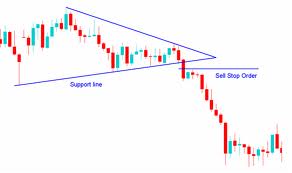Are you still opening and closing your Forex trades manually? Then it’s time to introduce some sophistication to your trade management by going beyond “at market” orders and adding stop, limit and OCO orders into your trading arsenal.
By incorporating these sophisticated order types into your trading strategy, you will gain an added advantage that will translate to better execution and better prices when you enter and exit trades. You will also gain added protection against major unexpected events like market shocks and natural disasters. It’s no coincidence that every professional trader uses these orders, and that’s why you should too.
Don’t worry if you’ve never used any of these orders before. In this section, we will cover a brief overview of each order, and you can follow through to read more about each type of order if you want to.
Advanced Articles on Forex Orders:
Stop Orders
A stop order is an order with your broker to take a long position at or above a specified price, or to short it at or below a specified price. This type of order is normally used to close out open trades, though you can use it to enter trades as well. For example, if you entered your long position in the EUR/USD at 1.3500 and you identified a key support point at 1.3450, you would place your stop order at around 1.3445 so as to close out your trade if the price falls to or beyond that point.
It’s advantageous to use stop orders to manage your trades because firstly, it defines a concrete “get out” point for all of your trades and ensures that you will definitely be out of your trade when the price hits your stop level. This is especially helpful for new traders who have problems with trading discipline and accepting losses in particular. It also helps to alleviate the stress of holding a position overnight or during intervals where you cannot be at your computer, because you know that there’s a failsafe mechanism in place to get you out if the price moves to the stop out level.
Here’s a comprehensive guide to using stop orders in your trading: Introduction To Stop Orders
Limit Orders
A limit order is an order with your broker to take a long position at or below a specified price, or to short it at or above a specified price. This type of order is normally used to close out open trades, though you can use it to enter trades as well. For example, if you entered your long position in the EUR/USD at 1.3500 and you identified a key resistance point at 1.3550, you would place your limit order at around 1.3545 so as to close out your trade if the price approaches and hits that point.
Most traders would use a limit order as a “profit target” so as to be certain to achieve their desired exit price. Sometimes, the price may briefly touch your target exit price before quickly retracing back a few pips, and if you’re relying on manual execution you’ll definitely miss the target price and even end up a few pips worse off than you could have been. Over time, poor execution could end up being the difference between you making a profit or a loss for the month, so limit orders are truly a godsend for achieving the best possible execution. Again, this is an invaluable automation tool that will allow you to manage your trades effectively even if you are away from the computer for any reason.
Here’s a comprehensive guide to using stop orders in your trading: Introduction To Limit Orders
OCO Orders
Typically, when you’re using stop and limit orders to manage your trades, it’s an either/or proposition. If you get out at your limit price, then you have no more use for your stop order, and vice versa. Obviously, the last thing you’ll want is for your other floating order to stay in the system and to open up a trade that you didn’t want, and that’s where OCO orders come in. OCO stands for “one cancels other”, so if you set up your limit and stop orders with the OCO condition, then if one is executed the other will be cancelled.
These days, most Forex brokers will ensure that your stop and limit orders on open positions are OCO, but you should still make sure that this is the case.
Here’s a comprehensive guide to using stop orders in your trading: Introduction To OCO Orders
Have you Tried Binary Options Trading Yet?
 Binary Options trading is one of the newest forms of trading to hit the markets. Binary options allows you to trade currencies, stocks or indices with fixed odds. For more information visit our recommended broker now:
Binary Options trading is one of the newest forms of trading to hit the markets. Binary options allows you to trade currencies, stocks or indices with fixed odds. For more information visit our recommended broker now:






